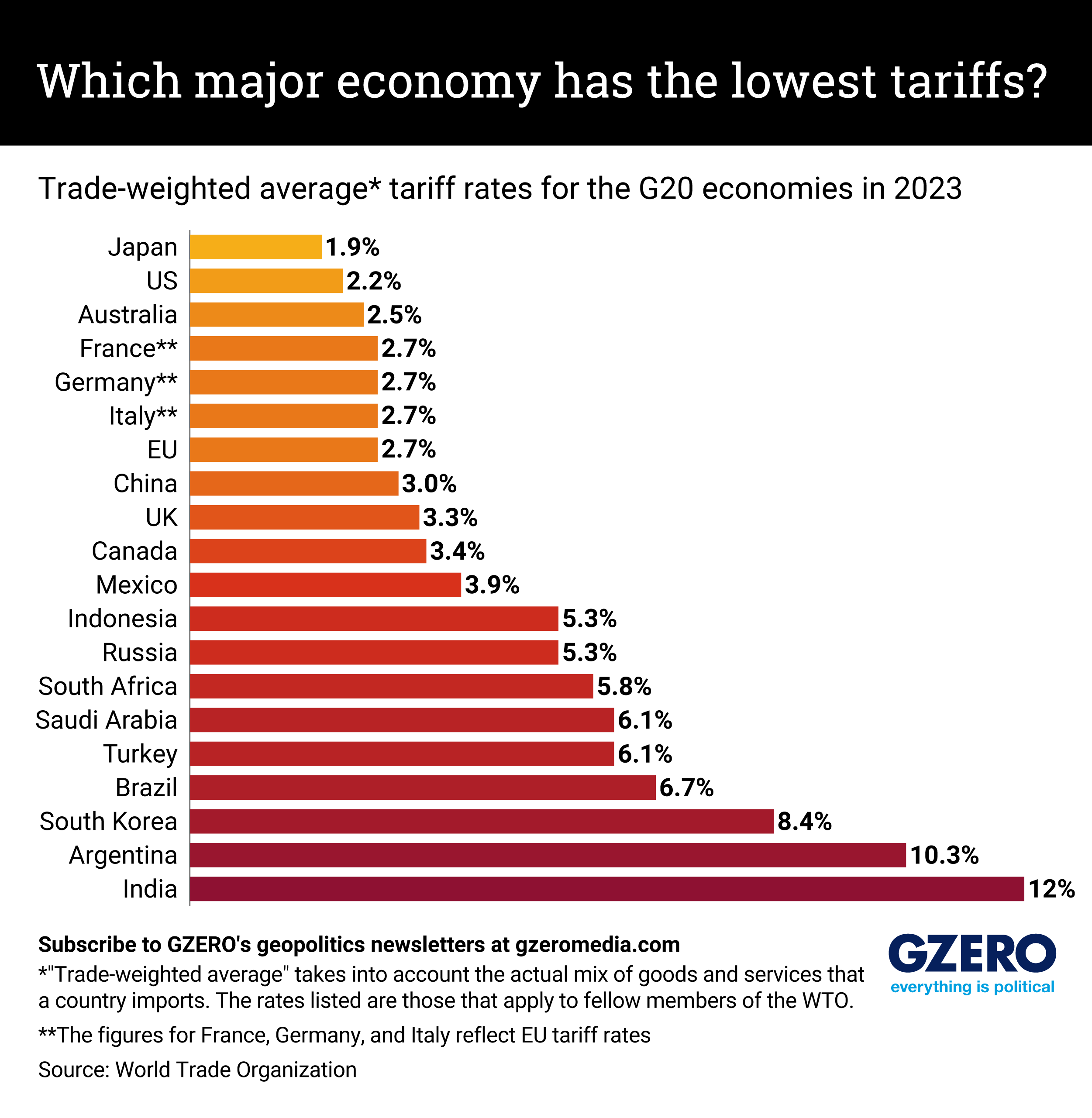January 23, 2025
In the eight years since Donald Trump first arrived in the White House, US tariffs have risen considerably. During his first term, he imposed levies on tens of billions of dollars worth of goods from China and the EU to address perceived unfair practices by America’s main trade partners. (He also used tariffs to renegotiate the 1994 NAFTA free trade deal with Mexico and Canada, resulting in today’s USMCA.)
The Biden administration scaled back the EU tariffs but built on the China tariffs with additional measures. The tariffed share of US imports is now the highest it has been in decades, and Trump has threatened to boost tariffs even more.
But he’s starting from what is still, despite all that, a low base. The US has the second-lowest tariff barriers among the G20, the group of the world’s largest economies.In 2023, the trade-weighted average US tariff rate – a measure that takes into account the mix of goods a country actually imports – was just 2.2%. Only Japan’s was lower. Canada’s, by comparison, was 3.4%. The EU’s was 2.7%. And India’s was a whopping 12%. Here’s a look at how all 20 economies stack up when it comes to levies at the border.More For You
- YouTube
Gotta maximize sleigh-holder value. #PUPPETREGIME
Most Popular
- YouTube
On Ask Ian, Ian Bremmer breaks down the steady escalation of US pressure on Venezuela and why direct military action is now a real possibility.
US President Donald Trump arrives to announce reciprocal tariffs against US trading partners in the Rose Garden of the White House in Washington, DC, USA, on April 2, 2025.
POOL via CNP/INSTARimages.com
From civil conflicts to trade wars to the rise of new technologies, GZERO runs through the stories that have shaped this year in geopolitics.
Ukrainian serviceman walks near apartment buildings damaged by Russian military strike, amid Russia's attack on Ukraine, in the frontline town of Kostiantynivka in Donetsk region, Ukraine December 20, 2025.
Oleg Petrasiuk/Press Service of the 24th King Danylo Separate Mechanized Brigade of the Ukrainian Armed Forces/Handout via REUTERS
Ukrainian intelligence services assassinated a senior Russian general on the streets of Moscow on Monday, detonating a bomb strapped to his car.
© 2025 GZERO Media. All Rights Reserved | A Eurasia Group media company.
